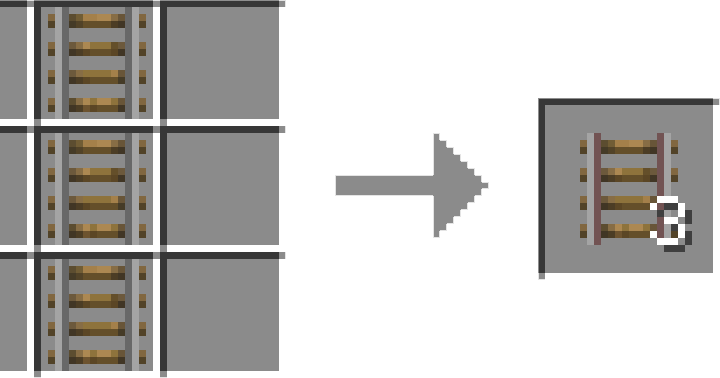

- DISTANCE BETWEEN POWERED RAILS MINECRAFT MAX SPEED UPDATE
- DISTANCE BETWEEN POWERED RAILS MINECRAFT MAX SPEED FULL
DISTANCE BETWEEN POWERED RAILS MINECRAFT MAX SPEED UPDATE

These can be placed on the block adjacent to the Rail, or on the side of a Block (on same level or one above) the Rail. One common technique is to use a Lever for constant powering, or a Button for a power pulse. The source of this signal can come from Redstone Torches, Redstone Blocks, Levers, Buttons or other Redstone circuits. The speed of a Minecart will reduce by length of the rails, the rails going uphill, or the tracks going next to a wall.Ī Powered Rail can be powered by a Redstone signal leading into the Rail.

The maximum speed of a Minecart on a straight stretch will be 8 m/s (11.1 m/s in a diagonal). Using multiple powered rails or going downhill will increase the speed of the Minecart. If it is not powered, it will reduce the speed of the Minecart, and in most cases two adjacent unpowered segments will bring the Minecart to a complete stop. To use the Powered Rail, it needs to be incorporated into the track, and be powered. Powered Rails act as boosters to speed up Minecarts. 6 Gold Ingots + 2 Sticks + 1 Redstone => 6 Powered Rails.
DISTANCE BETWEEN POWERED RAILS MINECRAFT MAX SPEED FULL
So take it slow, and ride your minecart into that cave full of bloodthirsty hostile mobs safely.Powered Rails can be obtained by Crafting them in a Crafting Table. It’d be dangerous if we let you travel any faster, and we’re a responsible game. Why are you making that face? They don’t have seatbelts. Today, there are high-speed railways all around the world – the fastest is the Fuxing Hao CR400AF/BF in China, which can cover the distance between Beijing and Shanghai at an astonishing 249 miles per hour, or just over 400 kilometers per hour.īy comparison, Minecraft’s minecarts are capable of a maximum speed of just eight miles per hour. The new metal rails were much more durable and could hold a lot more weight, making them more practical as permanent transport infrastructure. The modern railway, with metal rails, came into being in the mid-1700s, after the invention of the steam engine dramatically increased production of iron. It operated until the first century AD, and there are still a few remnants of the route today. “Wagonways”, with wooden rails and carts pulled by horses, were widely used in the 1500s to transport ore out of mines in Europe.īut the oldest-known railway is almost 2000 years older than that! There’s evidence that the Ancient Greeks used a primitive railway called the Diolkos, paved with stone, to transport boats across the eight-kilometre-wide Isthmus of Corinth. The era of railway travel in the real world is usually said to have started with the invention of the steam locomotive in the early 1800s, but rails themselves are actually much older.


 0 kommentar(er)
0 kommentar(er)
